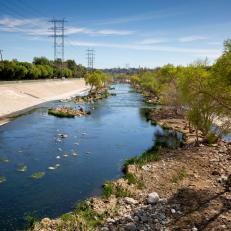California Wildfires: Calm After the Burn
As a nature photographer passionate about conservation, it’s important to document the ugly with the beautiful, because without that balance, we risk becoming accustomed to a world shaped by destruction and not one of harmony. Nature will regenerate and fire is an important part of that process, but we must consider what role we play in that process, too.
Entering wildfire areas is dangerous. Use caution and check with local authorities for rules and regulations. Never interfere with an active fire effort.

The human story is an aspect I often include in my photographs, but I have rarely had the chance to document the brave heroes who save lives and livelihoods. This Cal Fire firefighter is focusing on hotspot areas in the Bobcat Fire.
The bright red of the Cal Fire trucks is the only bright spot in a scene of destruction. This is an area along the Bobcat Fire, which is burning in the Angeles National Forest north of Los Angeles. Even though it is a grim scene, the symmetry of the firefighters and their trucks in the landscape caught my eye.
In the forest, there were few signs of life, but these bones, possibly from a raccoon or possum, were found near a tree. There were no other remains, so I speculate that this animal had died before the fire and was dragged here by some other scavenger.
With the fire destroying the undergrowth and brush, the amount of trash alongside the roads now becomes visible. Anything you can think of was found, from aerosol cans and beer cans to mattress springs and even old pans from the mining days--our mark always seems to stay visible.
Not every photo is meant for a gallery wall, but they all tell a story. The trash piled up everywhere was devastating.
Wide angle images of a fire's aftermath are difficult to make interesting, with few subjects to focus on. This particular tree was spread wide and positioned in a way that allowed me to make a wide composition.
It felt like walking on a sand dune, with at least four inches of soft ash carpeting the entire floor. Scientists are able to determine how hot a fire is by the depth of the ash and depth of the burns on roots.
These trees and hillside reminded me of the photos I have seen of Namibia, with red dunes and a few sparse, black trees. The composition struck me and I tried a number of different angles and frames, but this was my favorite.
I could only imagine what this must have looked like when it was still on fire, flames roaring overhillsides taking with them every living thing in its path. The photo tells one story, but for me on the ground, the smell is what I remember. It wasn't the beautiful smell you get from a campfire, but an unpleasant, damp mustiness.















